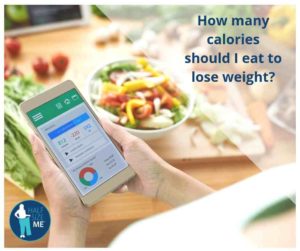 How many calories should I eat to lose weight?
How many calories should I eat to lose weight?
I get this question often because people will run an online calculator, or take numbers from a personal trainer, or get an InBody scan, a body-fat test, or a Dexa scan and walk away with a slip of paper showing their target calories.
You believe these numbers are accurate, but what you notice, time and time again, is that the numbers don’t match up.
How can you get different numbers from different sources?
The answer is simple:
At best, these are all estimations. Your body is constantly changing—what calories you need today and what calories you’ll be burning next week might be two distinctly different amounts.
Many factors play into your metabolism and your calorie needs, such as your activity level, the foods you select, if you’re sick or healthy. And, if you’re female, your time of the month is a factor.
Since our bodies are so adaptive and changing, locking down one number that is 100% accurate all the time is a wild goose chase. It starts to feel overwhelming and confusing, and you might want to throw up your hands in frustration and scream, “I don’t know. I give up!”
But what if we take that reaction off the table? Instead, you realize that an estimate is the first step to figuring this out—you are just going to have to put in a little bit of work.
Over the course of a few weeks, your body will give you the feedback you need to determine if those numbers you were given are correct. The numbers generated by scans and calculators are a great launchpad for finding your accurate calories numbers, but there’s another step you must do to make sure you’re on the right track.
You need to create a simple bio-feedback loop.
It looks like this:
Eat a certain calorie allotment (based on what you were given), and then monitor your weight change over time.
This will help you nail down the correct numbers you need to lose weight. And when you understand this process correctly, you can change your numbers as your body and life changes.
I have created a tool to help you with this entire process. It’s called the Master Your Calories teaching toolkit. It walks you through creating the bio-feedback loop, how many weeks to spend on each part of the process, and how to assess your changes over time so you can be in the control.
There really is no need to throw up your hands in frustration. Once you know your maintenance and weight-loss calories, you can be in charge of changing them as necessary.
Once you understand and implement the bio-feedback loop you’ll never again need to turn to generic calculators and online recommendations to determine your calorie needs. You will know your calorie numbers, and, as your body and life situation changes, you will begin to know how to alter your calories, test your new limits, and see if what you’re doing is actually working for you.
For more help, please check out my Master Your Calories teaching toolkit

